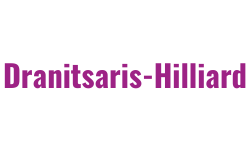
by Anne Dranitsaris, Ph.D. | Jul 28, 2022 | Organizational Dysfunction
Leadership behavior can be predicted based on a leader’s Striving Style or MBTI type. With the Striving Styles, you can also identify the function of the brain that will be used to decide and gather information and the predominant, emotional need that must be...

by Anne Dranitsaris, Ph.D. | Jul 21, 2022 | Organizational Dysfunction
Recognizing your self-protective patterns of reacting to narcissistic behavior is the first step to releasing yourself and dealing with it. People with a narcissistic persona become leaders because they feel entitled to a place at the top. They don’t always have...

by Anne Dranitsaris, Ph.D. | Jul 14, 2022 | Organizational Dysfunction
Self-Protective Caretaker Strategies Social or Supportive Leadership approaches lead by helping and supporting employee and team members’ development. People who use this approach to leading are empathetic and people-oriented. Unlike the more task-driven...

by Anne Dranitsaris, Ph.D. | Jul 7, 2022 | Organizational Dysfunction
Avoidant Leadership is when a leader wants to achieve their business objectives without engaging with others or drawing a lot of attention to themselves. These independent people want to be left alone to do their own thing and are afraid that if they engage too much...

by Anne Dranitsaris, Ph.D. | Jun 30, 2022 | Organizational Dysfunction
Permissive Leadership is a style of leadership that is hands-off in nature, where decision-making authority is delegated to employees. Also called Laissez-Faire Leadership, it has its roots in 18th century France in economic theory. Laissez-faire economics was based...

by Anne Dranitsaris, Ph.D. | Jun 23, 2022 | Organizational Dysfunction
There is nothing unusual about a top-down leadership model, as it has been used in businesses and organizations since the Industrial Revolution. Hierarchies are simplistic models for organizing and leading people, relying heavily on command and control to get people...








Recent Comments